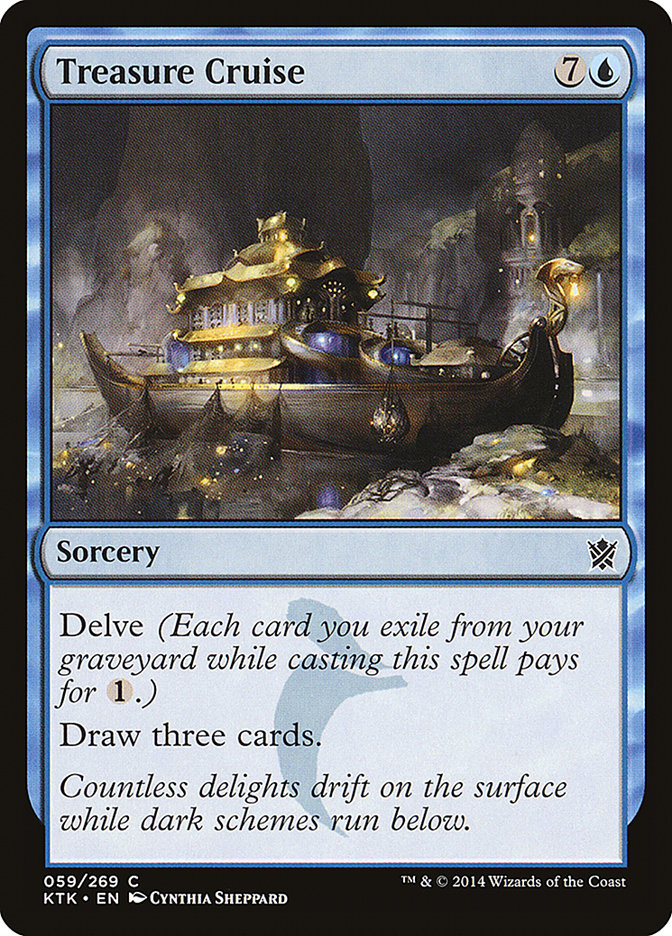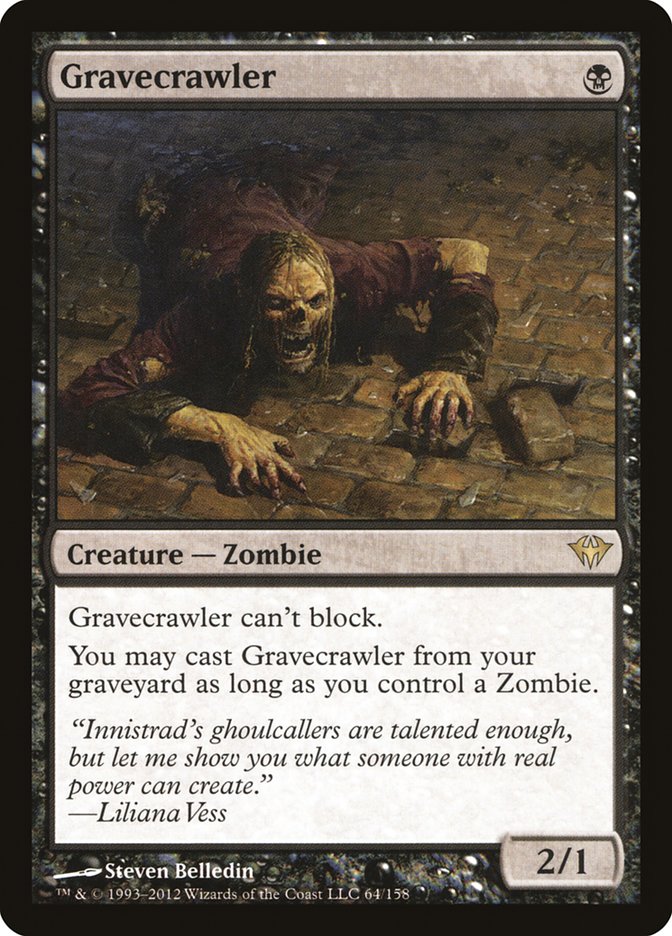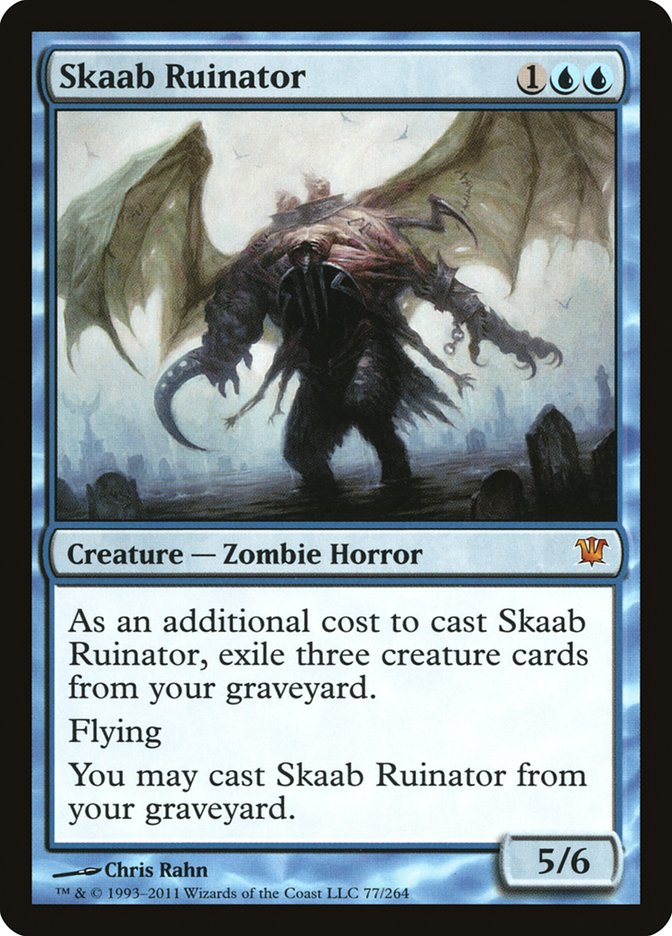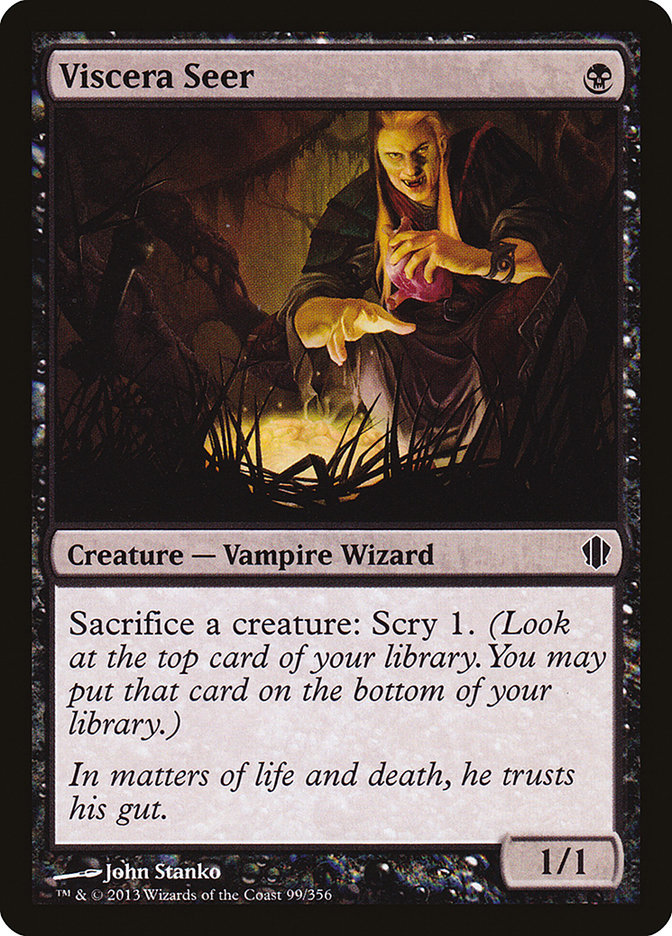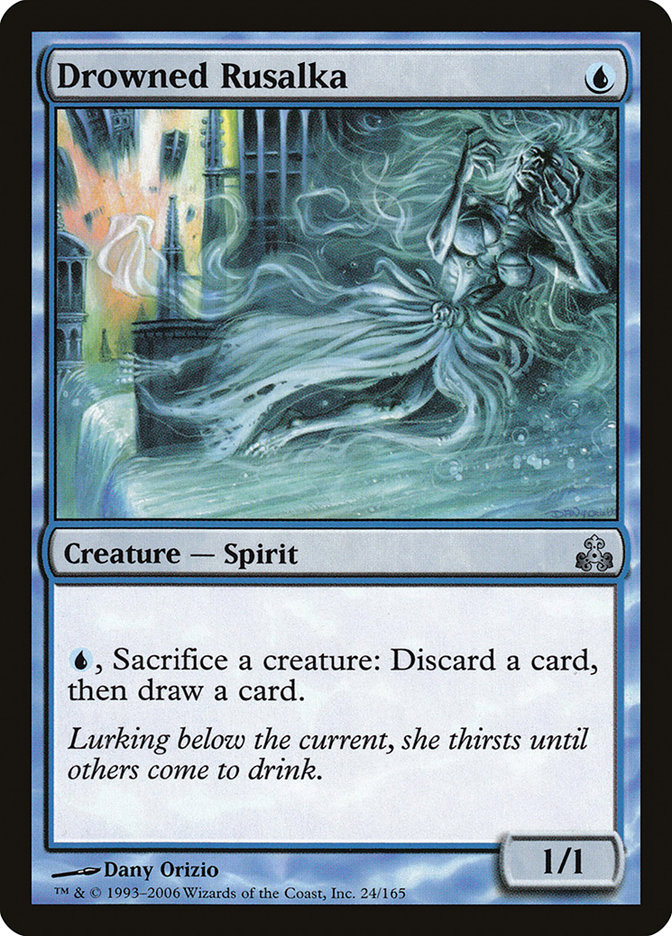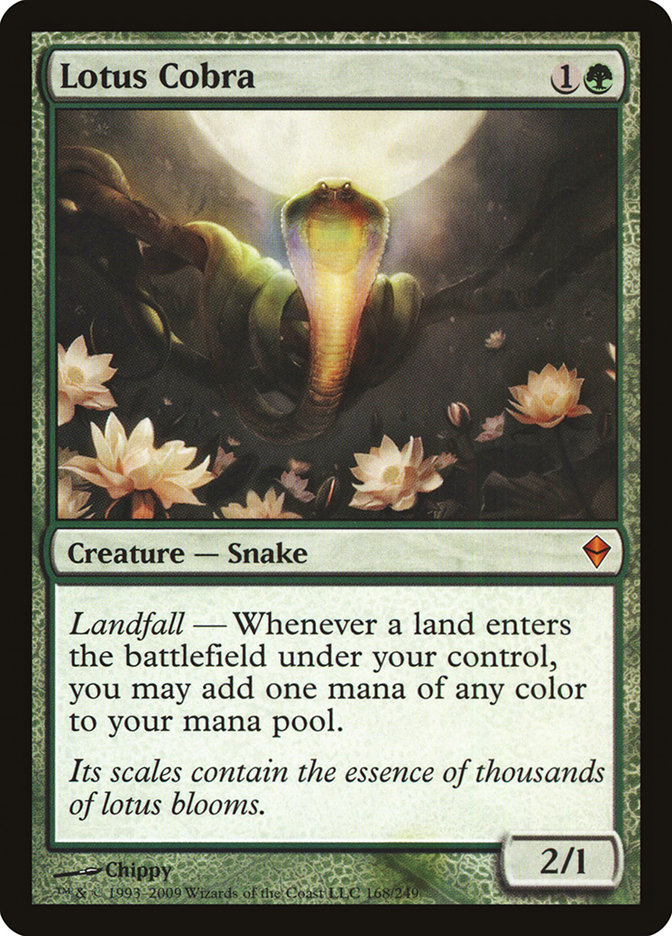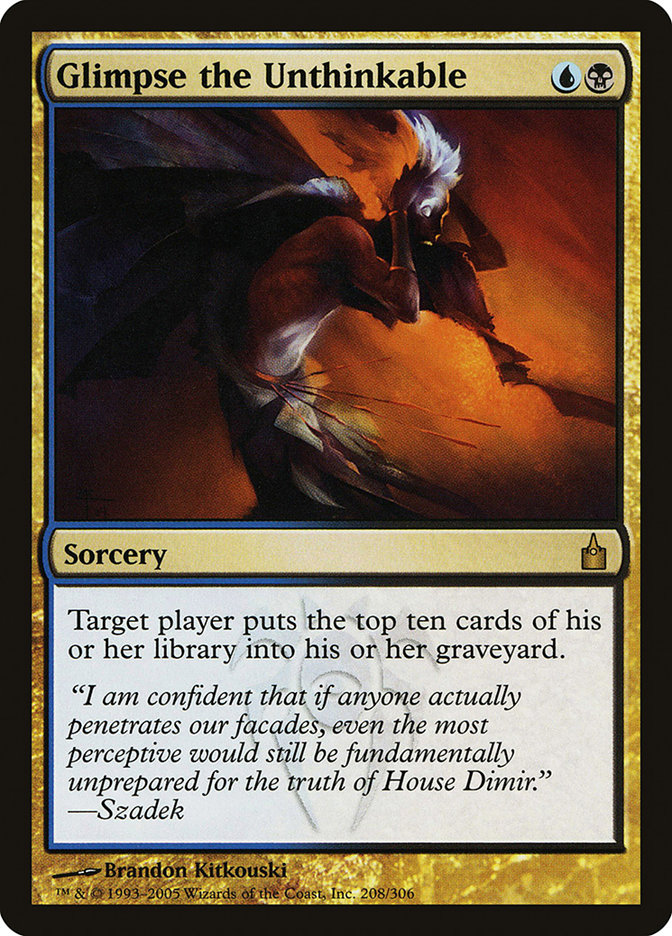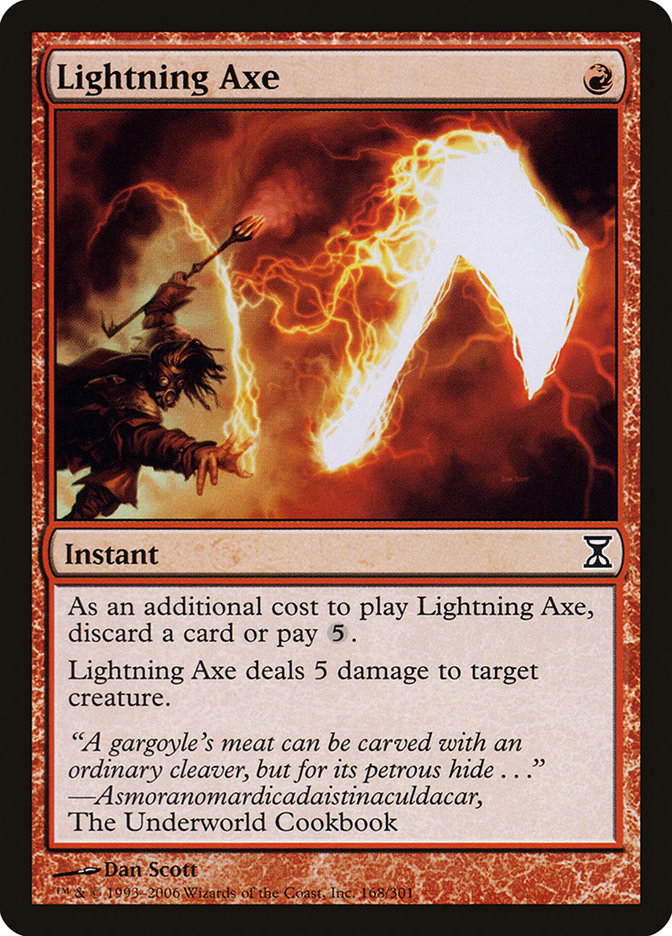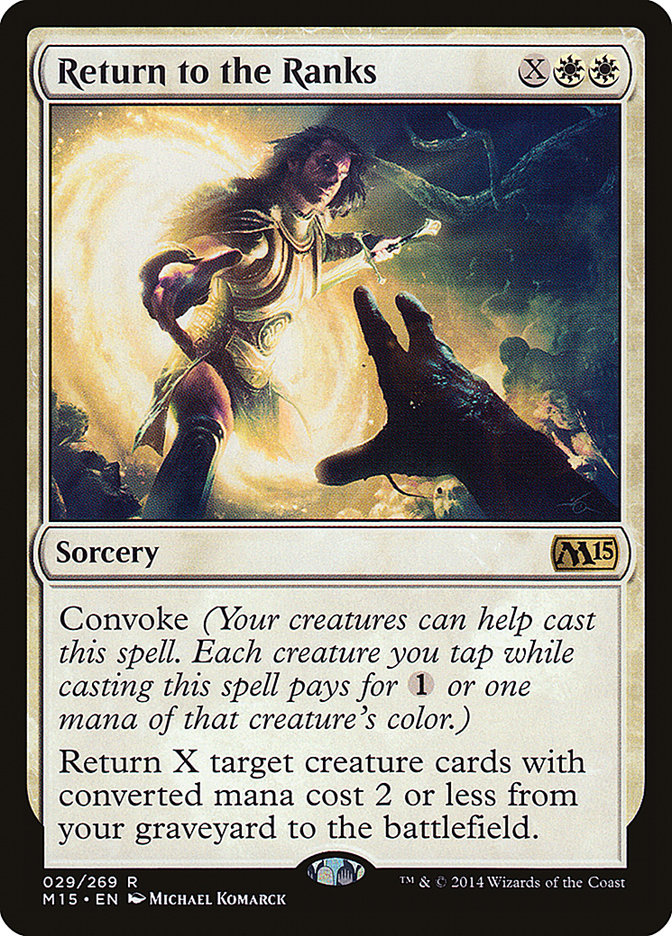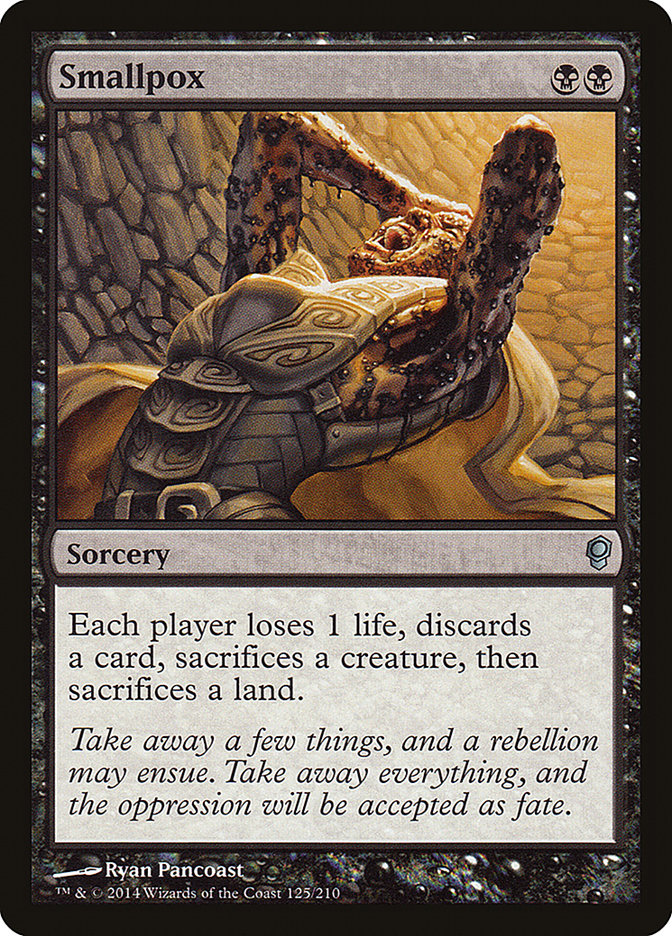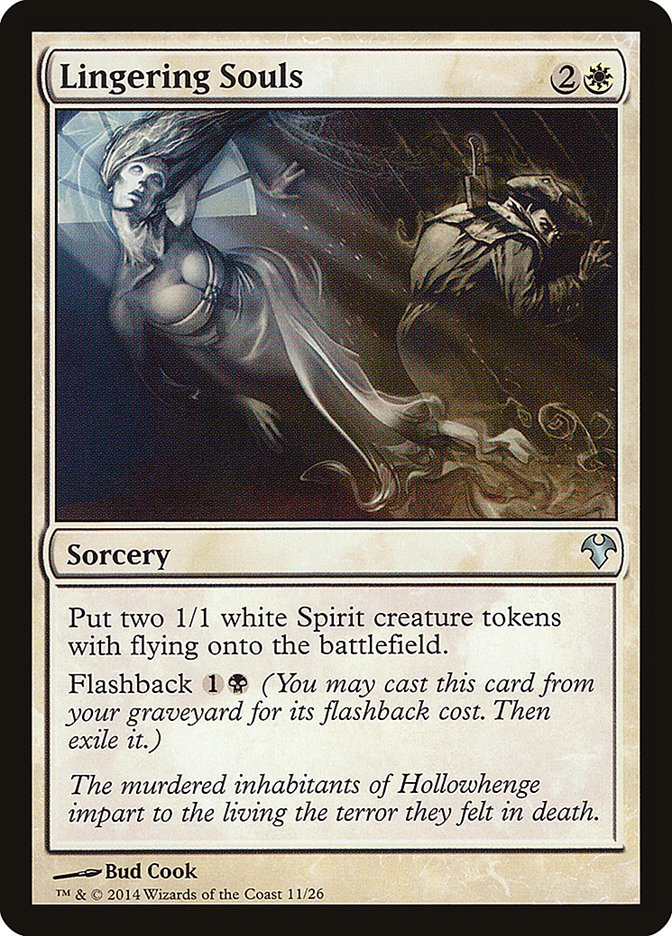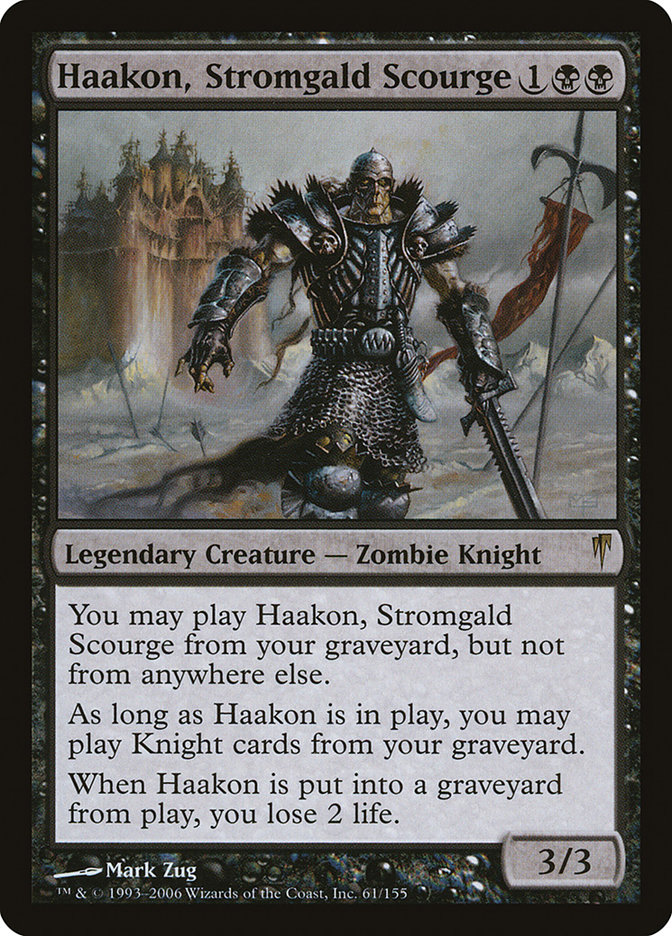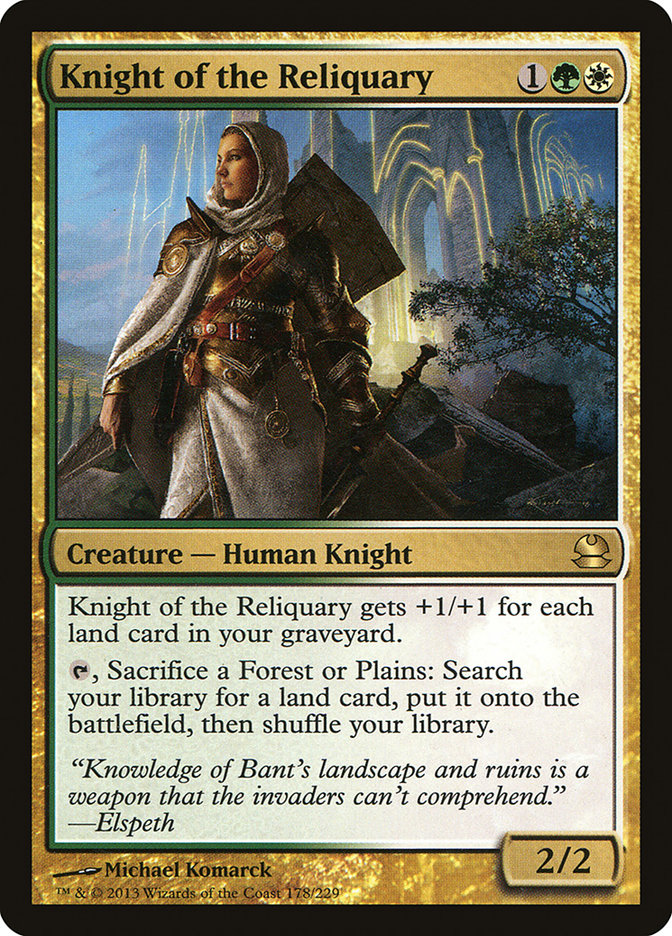First off, an introductory decklist:
Creatures (36)
- 3 Birds of Paradise
- 4 Merfolk Looter
- 4 Extractor Demon
- 1 Sedraxis Alchemist
- 4 Noble Hierarch
- 4 Hedron Crab
- 4 Enclave Cryptologist
- 4 Renegade Doppelganger
- 4 Vengevine
- 4 Fauna Shaman
Lands (15)
Spells (9)
Sideboard

Brad and David Ochoa managed double Top 8s at Nationals in 2010 playing this beloved strategy. Standard Dredgevine was just a very sweet deck–summoning a
bunch of Vengevines and gaining value out of the graveyard was fun in a relatively new way for Standard.
It was a deck I kept an eye on in Modern for a while. Enclave Cryptologist, Magus of the Bazaar, and Fauna Shaman aren’t especially sturdy crutches in a
format defined by Lightning Bolt and Snapcaster Mage, and Path to Exile made Vengevine much less powerful. The deck didn’t scale especially well and has
enjoyed limited success, to put it generously.
Creatures (30)
- 4 Birds of Paradise
- 2 Shambling Shell
- 4 Stinkweed Imp
- 4 Magus of the Bazaar
- 4 Hedron Crab
- 1 Iona, Shield of Emeria
- 4 Vengevine
- 1 Elesh Norn, Grand Cenobite
- 2 Skaab Ruinator
- 4 Gravecrawler
Lands (20)
Spells (10)

Creatures (25)
Lands (22)
Spells (13)

Following the printing of Deathrite Shaman and the reprinting of Scavenging Ooze, all appeared to be lost.
Well, one down, at least.
Dredgevine has continued to exist and languish as a rogue strategy in the format. However, I’ve got a feeling that Khans may be precisely what the Lich
Lord ordered. The new delve cards are very powerful, and Wizards has clearly priced the mechanic to generate interest at the Standard level.
As we all know, anything Standard decks can do, Modern can do better.
It almost seemed to me like the big delve cards had been costed just high enough to limit their brokenness with Hedron Crab, with Treasure Cruise being
exactly too expensive to make consistent powerful use of.
See, the ideal Dredgevine start is:
Turn 1: Noble Hierarch or Birds of Paradise
Turn 2: Hedron Crab, fetchland, and another one or two-drop creature assuming you found some Vengevines in your top six cards.
This particular start as described places exactly seven cards in your graveyard–just enough to go empty on Treasure Cruise, but not enough to generate
value with it by dredging a Stinkweed Imp or leaving a Vengevine/Bloodghast around for recursion.
However, it’s worth noting that the Cruise’s biggest foe in Modern is easily Remand, and generating the resources to cast it this early will generally make
it impossible for the opponent to effectively defend themselves and keep you from casting Cruise at the same time. Still, considering you’re already in for
a Hedron Crab, this is basically just a super-charged Compulsive Research.
If you open on two fetchlands instead, however, you’ve got the potential to start churning through the deck with a Stinkweed Imp or at least holding onto a
Bloodghast/Vengevine/Flashback spell.
So, to that end I knew the deck would want a mana base with as many fetches as possible. Previously, that was difficult to do in Modern; any deck playing
more than eight fetchlands would be playing at least one incapable of grabbing its best two duals. For example, many Dredgevine lists ran Misty Rainforest,
Verdant Catacombs, and Scalding Tarn; the latter can’t get Overgrown Tomb, while Marsh Flats can’t get Breeding Pool or Stomping Ground (which is even
worse). Arid Mesa is obviously right out.
Fortunately, Khans of Tarkir has solved that problem too!
The addition of Wooded Foothills is an excellent bridging fetchland to the deck, capable of grabbing every land you’ll most frequently require, given that
Watery Grave is at best vying for third place and perhaps even in fourth. Playing twelve fetchlands now involves very little sacrifice–in fact, you can
even go higher.
With these basic ideas in mind, I established the core that I was most interested in:
20-21 lands
You’ll notice that only leaves room for seven or eight additional cards–space is tight! There are a lot of potentially powerful cards and pseudo-packages
to consider, so I’d like to address each of them in turn.
Gravecrawler is generally a given in most Modern Dredgevine decks, but he’s no sacred cow. He’s much tougher to successfully recur than many creatures, but
he provides actual creature castings for Vengevine and is an additional one-drop, aiding in turn 2 nut draws that involve Crab and Faithless Looting
getting the party started quickly. If you run Gravecrawler, you’ll really want to run either a Skaab Ruinator or Shambling Shell or both, in order to give
you a Zombie you can get into play in order to start chaining those Gravecrawlers together. Ruinator is an issue in this deck, as Treasure Cruise
intersects unfavorably with its graveyard requirements, while Shambling Shell is… well, it’s a Shambling Shell.
Bridge from Below is another option for Zombie creation, but it requires a package in and of itself.
Patrick Chapin built a Dredge strategy for Pro Tour Born of the Gods that utilized these little guys with Bridge from Below, and while it may seem quirky
there are significant upsides. For one, Drowned Rusalka is a dredging machine in conjunction with a drawn Imp and a milled Bloodghast. For two, both of
these creatures do an excellent job protecting Vengevine and Bloodghast from Path to Exile or even other effects like Pillar of Flame shenanigans. Here’s
Patrick’s list:
Creatures (27)
- 2 Stinkweed Imp
- 4 Drowned Rusalka
- 4 Bloodghast
- 4 Hedron Crab
- 4 Vengevine
- 4 Viscera Seer
- 1 Skaab Ruinator
- 4 Gravecrawler
Lands (20)
Spells (13)

I haven’t had the time to test out the best way to squeeze Cruise in here, or to even really explore the possibility. I’m intrigued, but truthfully the
addition of both Gravecrawler and Bridge from Below to the deck puts you at six unique cards you’d rather avoid exiling if possible, which starts to make
it more difficult to delve for Treasure Cruise in the first place. Patrick has Glimpse the Unthinkable, which provides enough fuel but also takes up
several slots.
He made room by cutting the mana dorks, but I’m not ready to do that yet. I’m too committed to the dream of turn 2 Vengevines and Ancestral Recalls to give
up this early, and the mana dorks are a must for that goal.
The biggest upside to Patrick’s list? It’s significantly more resilient to Grafdigger’s Cage than most, thanks to Bridge. The fact that Cage is the de
facto graveyard hate card these days is beneficial for all of these decks, as Vengevine is totally castable, but Patrick’s in particular can do very
powerful things in spite of the artifact.
This was actually the first place my mind went. With my plan being to play between twelve and sixteen fetchlands, Lotus Cobra is essentially always going
to be pure value. Even better, Lotus Cobra gave me a new nut draw thanks to Glimpse:
Turn 1: Noble Hierarch or Birds of Paradise
Turn 2: Lotus Cobra, fetchland, Glimpse myself, cast a one-drop or Treasure Cruise as the graveyard dictates
I proxied this up and began to battle. The deck felt powerful but the variance was high; Glimpse was either a huge game or a stone blank depending on my
hand, and it was relatively difficult to cast. I also ran into more than a few moments where I was trying to Loot or Cruise into a second one-drop for
Vengevine and failing, because this list only had twelve one-drop creatures in the first place.
Lotus Cobra’s likely not worth it, at least not in significant numbers; one or two sound fine, and could help trim lands if that’s a goal. As for Glimpse,
I’m unconvinced that it’s much better than Satyr Wayfinder. Turn 1 mana guy, turn 2 Wayfinder offers minor Vengevine potential absent Crab but more
importantly gets you set up for some big turn 3s while also being a creature when you need one for Vengevine on later turns.
Amusingly, as I was debating the playability of Satyr Wayfinder in Modern, Sam Black gifted us with a delightful Legacy deck playing the creature.
Out-brewed once again!
While you don’t have to play additional dredge cards like Golgari Thug to make Lightning Axe work its magic, it’s probably worth it to do so. The Axe is at
its best when it’s helping you set up for intense turn 2 or 3 lines, and having a dredger in your hand is what makes that work. To wit:
Turn 1: Fetch Stomping Ground, Birds of Paradise.
Turn 2: Upkeep Axe your guy, discarding Stinkweed Imp. Dredge Stinkweed Imp.
You’re already at seven cards in the graveyard here, so even without a second land you can cast Treasure Cruise! Of course, you’ll be able to do much
better than that on average. Stinkweed Imp is clearly your best dredge option, but Golgari Thug isn’t so much worse, Darkblast and Life from the Loam offer
you value in different directions than most cards in the deck, and we’ve already discussed the Shell and Gravecrawler.
The largest bonus to running Lightning Axe is it lets you blast Scavenging Ooze out of your path, which can make or break game 1 in a big way against
conventional B/G midrange decks.
This isn’t so much a package as a way to cast more and more Treasure Cruises. Thought Scour is a Dark Ritual if casting Treasure Cruise is your game plan,
which is pretty interesting. Meanwhile, Snapcaster Mage is a creature for Vengevine that can also Flashback the Cruise for three cards. I don’t think you’d
want to run more than a pair, but it’s interesting to consider.
I’ve also debated the potential of Noxious Revival for similar reasons, but I don’t think the juice is worth the squeeze on that one.
Now, I don’t know exactly where I’m going with this one–however, it perks my fancy. Noble Hierarch and Birds both make white, making it easier to cast
than it first appears, and Snapcaster Mage can flash it back and help you convoke it out at the same time. Of course, it can also be played to get back
Snaps and in turn Flashback Treasure Cruises!
Voice of Resurgence is probably one of the most interesting two-drops for this card. Voice pays the white in Return’s casting cost, pays you off for your
ability to flood the battlefield, and can be recurred and sacrificed multiple times for significant value. It’s also a great weapon against every attrition
and counterspell deck in the format, of course.
Boneyard Wurm and Tarmogoyf are both basic beaters if you’re in the market, but I’m not.
Like Thought Scour, Smallpox is essentially a Ritual for Treasure Cruise. It has an additional upside in significantly damaging the vast majority of Modern
opponents, as starting on land and creature is the ideal start for so many decks, but I think Smallpox ultimately asks too much. You need BB to cast it, no
creature of your own on turn 1, and additional cards worth discarding to ensure you get paid for your efforts.
Lingering Souls is probably the best way to go if you Smallpox, and Souls is actually pretty reasonably-positioned in Modern at the moment. The issue I
have is that Souls doesn’t help you do anything broken and it’s just as vulnerable (if not more) to the most commonly-played sideboard hate, meaning your
deck will be less able to maneuver in post-sideboarded games. I’m not saying it’s unplayable, but if I were Souls’ing I’d probably be going in that Knight
of the Reliquary direction and trying to be a midrange deck.
Knight is perfectly playable as a large creature, but if that’s your game then you’re going to want to warp the deck in a more midrange direction as
opposed to my current interest in combos. Treasure Cruise and Knight chafe on each other a little bit, but ultimately I don’t think it’s insurmountable. If
you’re going off huge, then your Knight being an 8/8 vs. a 12/12 isn’t that big a deal. Allowing you to tutor up Horizon Canopy for big dredge turns is a
worthwhile note.
I’m way less intrigued by Haakon. Too much investment, not enough payoff. You could probably build a fun deck that makes this work, but I’m not interested
and doubt it would be capable of brawling at the upper tiers, which is my goal.
But Wait, There’s More
I haven’t even dived into the sideboarding options available. Ancient Grudge is a given for the Affinity matchup and graveyard-hating artifacts, sure. But
you’ve got Gnaw to the Bone for Burn, Ray of Revelation for Blood Moon and Rest in Peace decks, and potentially even Feeling of Dread if you’re feeling
truly frisky. It does buy you a turn against Twin, amusingly enough. Outside of all the weird graveyard cards, conventional Jund good-cards are all solid
options with blue combo-breakers like Swan Song or Spell Pierce also making reasonable choices.
Truth-time: I don’t have a list I’d recommend yet.
I’ve proxied up a few different ones and begun to play with them, and I’m convinced there’s something powerful and worth doing in this space. As you can
see above, however, there’s an incredibly diverse array of choices. This deck could play anywhere from three to five colors effectively, and the basic core
supports a variety of directions. Of the ones I’ve mentioned above, I’ve played a game or two with each but I’m still stunned by the sheer range of
possibilities! I’m trying to steer clear of two-drops that don’t provide immediate value or die profitably, such as Fauna Shaman, because that seems like
the best way to angle against the attrition-heavy nature of the Modern format.
Can any of these decks beat a Rest in Peace? No, probably not, but Grafdigger’s Cage occupies way more slots and Relic of Progenitus is easily the
next-best choice. As long as those facts remain true, Rest in Peace won’t be a large enough factor to justify shelving the deck on that demerit alone. I’d
rank Relic and Scavenging Ooze as the only commonly played cards that give you big fits, and with no deck playing both you’re really not in bad shape; they
have to draw their cards first, after all.
I’ve often mocked the presence of both Golgari Grave-Troll and Dread Return on the Modern banned list, because Grave-Troll and Stinkweed Imp are basically
Kitchen Finks and Courser of Kruphix. In many decks they do the same job, and one of them is certainly better most of the time, but neither is better all
of the time. Having one legal without the other just feels kind of arbitrary, especially considering that Dread Return is the card that actually enables
most broken Dredge games.
Previously, I’ve advocated to #FreeGGT, and if Wizards is really worried then to ban Bridge in its stead–after all, the only part of Bridge that looks
anything like a Magic card is the back of it anyway. However, the power level of my proxied up games with this strategy actually has me thinking that it’s
probably correct to keep both Grave-Troll and the Return banned!
It’s safe to say I’ve got work to do here. And if I can do this in Modern, the Legacy potential is seriously scary… at least people actually play Rest in
Peace there.
Meanwhile, if you enjoy my Modern content then I’d like to point you towards the new podcast I’ve been co-hosting with Alex Kessler:The Masters of Modern, generously sponsored by the fine gentlemen ofRocketJump studios. You may know Alex as one of the creators of Top Decking, a very funny Magic web series that just finished its second season, while
RocketJump is preparing to release its third season of Video Game High School, a show I literally devoured last Friday. RocketJump also sponsors The Command Zone, our sister podcast for hundred-card enthusiasts.
These guys are making compelling independent content, and it’s been both educational and entertaining to work with them. Check out those links if you like
things that are awesome!
Now to build my Sidisi, Brood Tyrant Commander deck…


